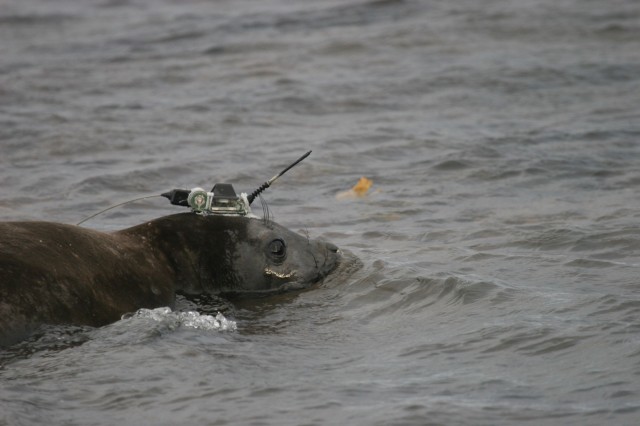Seals lend scientists a helping flipper in the Southern Ocean
Ars Technica » Scientific Method 2013-12-03

The standard issue tool for the oceanographer at sea is the Conductivity, Temperature, and Depth instrument (or CTD). These sensors are repeatedly lowered into the water to record vertical profiles of—you guessed it—temperature and electrical conductivity (to measure salinity). This work is expensive, requiring a properly-outfitted ship and crew.
But what if you could get a decidedly low-tech piece of equipment to do most of the work for you”? Researchers in the Southern Ocean near Antarctica (and elsewhere) have developed a sealCTD—a (small) CTD instrument strapped to a seal, which then gathers data that is otherwise quite hard to come by.
It might seem like the Argo array—an armada of automated floats that carry CTDs throughout the ocean—has already been set up to gather this data. But sea ice and the current that circles Antarctica keeps the floats at a distance. Seals, on the other hand, make their living navigating the sea ice in the region.
Read 7 remaining paragraphs | Comments




